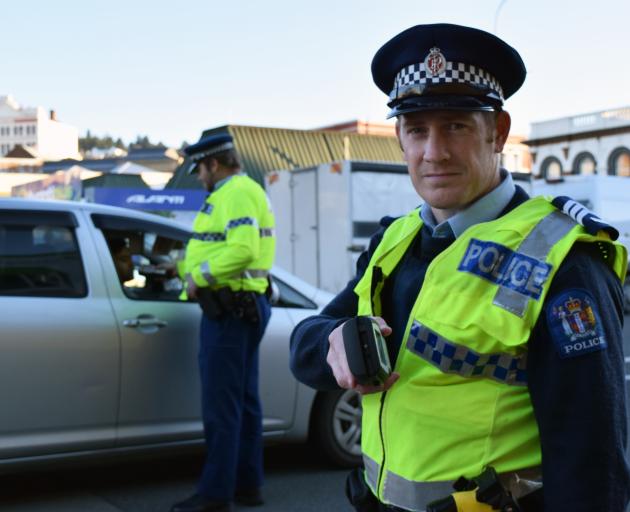
A sharp drop in roadside breath tests in the South is due to a change in tactics, police say.
But the Automobile Association is calling for the return of "high-profile blitzes to send a message'' to motorists considering drinking and driving.
Police data released to The Star under the Official Information Act reveals nearly 89,000 breath tests were conducted in the Southern district last year, a 66% drop on the nearly 269,000 tests conducted in 2013.
The figures were similar nationally - nearly 1.4 million motorists were tested last year, compared with nearly 3.1 million in 2013.
The number of serious and fatal crashes where alcohol was a factor remained steady over the same period.
NZ Transport Agency data released to The Star under the Official Information Act shows alcohol was a factor in 47 fatal crashes and 197 serious crashes in New Zealand in 2013, compared with 61 fatal crashes and 178 serious crashes last year.
In Dunedin, alcohol was a factor in five fatal crashes and 32 serious crashes between 2013 and 2018.
Acting Otago Coastal road policing manager Blair Dalton, of Dunedin, said a reason for the drop in the number of motorists being breath tested in the South was a change in police tactics.
Police used to test motorists at "large-scale'' checkpoints for up to three hours.
Now police crunched data to take a more "tactical approach'' to select locations and times to run "pop-up'' checkpoints for about an hour.
Another factor for the fall in tests could be because of the accuracy of the data being collected, he said. In the past, officers recorded the number of tests conducted manually.
New breath-testing devices introduced in 2015 had GPS technology and upload data automatically, resulting in more accurate testing numbers.
A failed breath test traditionally meant a visit to the booze bus or a ride to a police station but the new breathalysers allow officers to process suspected drink-drivers on the roadside.
The data from the new technology helped police decipher trends and pick locations for future checkpoints, he said.
Motorists often got upset when they were tested during the day, believing it was a waste of everyone's time as people didn't drink and drive then.
"They do and we do catch them.''
Motorists should not think a drop in the number of tests being conducted meant they were less likely to get caught drink-driving.
"You could get tested anywhere, anytime. Expect us to be in places you don't expect us to be - that's how our approach has shifted from doing the big checkpoints.''
Automobile Association Otago District Council chairman Malcolm Budd, of Dunedin, said the association was concerned by the reduction in testing.
"We understand the police explanation about a more targeted approach but we are worried that the lower number of tests might see some people feel like they can take the risk of driving drunk.''
In a nationwide survey of AA members last year, about 66% of respondents believed police were less present on New Zealand roads.
"A highly visible police presence on the roads is important for road safety. So we think the police need to be looking at bringing back more of those high-profile blitzes, which helped send the message that if you drink and drive, you are likely to get caught.''
SHAWN.MCAVINUE @thestar.co.nz
Comments
If there is doubt over numbers of breath tests in previous years, then surely the use of disposable mouth pieces would prove the numbers. Have police needed to buy any in recent years or are there still container loads of them hidden somewhere?












